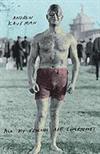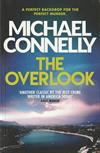
Earth
Registered by  GoryDetails
GoryDetails of Nashua, New Hampshire USA on 3/6/2017
of Nashua, New Hampshire USA on 3/6/2017
 This Book is Currently in the Wild!
This Book is Currently in the Wild!
 GoryDetails
GoryDetails of Nashua, New Hampshire USA on 3/6/2017
of Nashua, New Hampshire USA on 3/6/2017 This Book is Currently in the Wild!
This Book is Currently in the Wild!
1 journaler for this copy...
I found this good-condition paperback at a local Salvation Army thrift store, and nabbed it for another release copy.
When I first read the book, I was really blown away! The author's preface gave me some warning:
Sobering indeed, especially when I got to page 6 and came across this, as the characters discuss the fact that a tiny man-made black hole has escaped from the lab:
Whoo! This beats the recent spate of earthquake and/or comet-striking-earth disaster scenarios.
Among the many aspects of the story that appealed to me: this opening scene takes place in New Zealand, and one of the main characters is Maori. [He helpfully describes the "singularity" as a monster - a taniwha in Maori.]
The narrative is punctuated at frequent intervals by inserted news articles, excerpts from textbooks, magazines, and blogs, etc. - most if not all of these are also fictional, but they help establish the backgrounds of some of the story's elements, and provide a sense of fact and immediacy. [Some of them are very, very funny, such as the one about EmilyPost - a "courtesy-worm" that infiltrates the computers of people who post rude, vituperative messages online, and suggests to them that if they calm down a bit, their credibility ratings may rise. I think we've all seen situations where this would come in handy!]
The story itself switches between several locations and several primary characters, ranging from the scientists who created the black hole and are trying to (a) find it and (b) figure out some way to control, remove, or otherwise limit its effects to impoverished vagabonds just trying to eke out a living in a world where the human population is exceeding the planet's ability to feed it, and other species are being moved to specially-built "arks" to prevent their total extinction.
Another point of interest, especially considering that the book was published in 1990: a major "character" is the World Wide Web, which people rely on, interact in, and use in ways that feel very current now, but were purely speculative then. [Whether it will ever be possible for software to allow people who are not at least somewhat computer-savvy to build genius-level web-searching tools - never mind to control things on a global scale - isn't clear, but the nature of the web makes most of the ideas in this book seem all too feasible. Sometimes in a good way, and sometimes... not so much!] Brin points out "The problem usually wasn't getting access to information. It was to stave off drowning in it." Sounds familiar...
There is a lot of tech-talk here, but it zips by quickly, and there's more than enough human interaction to hold the interest of readers who don't want to focus on the scientific details. Fairly early on, there's a very-human-indeed chapter in which three young men, trying to find some kind of future while avoiding the more aggressive gangs, meet a mentor - a gentle, wise man who talks with them, understands them - and then, in their minds (and with the best of intentions), betrays them. (Might seem to be a small betrayal, especially today, but if you think about it it's a very timely question.) Their reactions to this trigger significant events for all three of them, and to some degree have an affect on the story.
The variety of characters adds interest, too; there's the black-hole-creating scientist, his genius-level, web-savvy grandmother, the rebellious youth, a mysterious reporter, a self-centered woman who reminded me of nothing so much as a "real housewife of New Orleans" {wry grin}, a lonely young man who does cleanup chores in one of the zoos/arks, an astronaut whose husband is one of the first casualties of the runaway singularity, and many more. And the locations are many and varied - not surprising, perhaps, in a book about global disaster, but when can you visit New Zealand, Easter Island, Greenland, a space station, Flaming Gorge Dam, a massive cave system, a self-contained animal-preserve, and a floating city made up of ships and boats of all sizes, all between the same covers?
The book doesn't just focus on one disaster (however huge it could turn out to be); it presents a not-that-distant future world in which climate problems, pollution, and growing populations have resulted in some significant shifts in world power - and in world attitudes. While things are far from perfect, basic methods of conservation and recycling have become practically world-wide mandates (with a few key exceptions). There are conflicts of philosophy as to whether the world might be better off if the population was reduced drastically (by whatever draconian measures were needed), or if the focus should be on optimizing food production and trying for a slow reduction - or at least no expansion - of the population. And some sects are convinced that the world would be better off with no humans on it at all. [There's a delightful bit about a group that was agitating for the development of a species of predators that would limit the human population - vampires being a strong candidate, with werewolves also suggested. Jen, the web-savvy grandmother, finds this amusing and hopes it's meant tongue-in-cheek, but sends them an anonymous donation every year; "after all, you never could tell." [I really, really like Jen.]
Given the way the story started I had some assumptions as to the path it would take, but I was surprised - at several different points; a good thing, as the surprises all made sense once I got to them. [Well, OK, the last, biggest one, maybe not so much - a certain amount of disbelief had to be suspended at one point. But it wasn't that hard to do, and one could postulate some scientific basis for it if one really, really wanted to.] And since the author commented on his own optimism up front, the sheer level of disaster that did take place was shocking (especially the nature of it) - though things could have been Very Much Worse.
Lots and lots to relish in this book, and plenty to think about too; strongly recommended!
[There's an afterword by the author, and a bonus story called "Ambiguity" set a few years after the events of the book.]
When I first read the book, I was really blown away! The author's preface gave me some warning:
"As writers go, I suppose I'm known as a bit of an optimist, so it seems only natural that this novel projects a future where there's a little more wisdom than folly... maybe a bit more hope than despair.
"In fact, it's about the most encouraging tomorrow I can imagine right now.
"What a sobering thought."
Sobering indeed, especially when I got to page 6 and came across this, as the characters discuss the fact that a tiny man-made black hole has escaped from the lab:
"'You're saying... the singularity didn't dissipate like the experts said? That it might still be down there, absorbing matter from the Earth's core?'
"Alex understood the man's incredulity. Human minds weren't meant to picture something that was smaller than an atom, and yes, weighed megatons. Something narrow enough to fall through the densest rock, yet bound to circle the planet's center in a spiraling pavane of gravity. Something ineffably but insatiably hungry, and which grew ever hungrier the more it ate..."
Whoo! This beats the recent spate of earthquake and/or comet-striking-earth disaster scenarios.
Among the many aspects of the story that appealed to me: this opening scene takes place in New Zealand, and one of the main characters is Maori. [He helpfully describes the "singularity" as a monster - a taniwha in Maori.]
The narrative is punctuated at frequent intervals by inserted news articles, excerpts from textbooks, magazines, and blogs, etc. - most if not all of these are also fictional, but they help establish the backgrounds of some of the story's elements, and provide a sense of fact and immediacy. [Some of them are very, very funny, such as the one about EmilyPost - a "courtesy-worm" that infiltrates the computers of people who post rude, vituperative messages online, and suggests to them that if they calm down a bit, their credibility ratings may rise. I think we've all seen situations where this would come in handy!]
The story itself switches between several locations and several primary characters, ranging from the scientists who created the black hole and are trying to (a) find it and (b) figure out some way to control, remove, or otherwise limit its effects to impoverished vagabonds just trying to eke out a living in a world where the human population is exceeding the planet's ability to feed it, and other species are being moved to specially-built "arks" to prevent their total extinction.
Another point of interest, especially considering that the book was published in 1990: a major "character" is the World Wide Web, which people rely on, interact in, and use in ways that feel very current now, but were purely speculative then. [Whether it will ever be possible for software to allow people who are not at least somewhat computer-savvy to build genius-level web-searching tools - never mind to control things on a global scale - isn't clear, but the nature of the web makes most of the ideas in this book seem all too feasible. Sometimes in a good way, and sometimes... not so much!] Brin points out "The problem usually wasn't getting access to information. It was to stave off drowning in it." Sounds familiar...
There is a lot of tech-talk here, but it zips by quickly, and there's more than enough human interaction to hold the interest of readers who don't want to focus on the scientific details. Fairly early on, there's a very-human-indeed chapter in which three young men, trying to find some kind of future while avoiding the more aggressive gangs, meet a mentor - a gentle, wise man who talks with them, understands them - and then, in their minds (and with the best of intentions), betrays them. (Might seem to be a small betrayal, especially today, but if you think about it it's a very timely question.) Their reactions to this trigger significant events for all three of them, and to some degree have an affect on the story.
The variety of characters adds interest, too; there's the black-hole-creating scientist, his genius-level, web-savvy grandmother, the rebellious youth, a mysterious reporter, a self-centered woman who reminded me of nothing so much as a "real housewife of New Orleans" {wry grin}, a lonely young man who does cleanup chores in one of the zoos/arks, an astronaut whose husband is one of the first casualties of the runaway singularity, and many more. And the locations are many and varied - not surprising, perhaps, in a book about global disaster, but when can you visit New Zealand, Easter Island, Greenland, a space station, Flaming Gorge Dam, a massive cave system, a self-contained animal-preserve, and a floating city made up of ships and boats of all sizes, all between the same covers?
The book doesn't just focus on one disaster (however huge it could turn out to be); it presents a not-that-distant future world in which climate problems, pollution, and growing populations have resulted in some significant shifts in world power - and in world attitudes. While things are far from perfect, basic methods of conservation and recycling have become practically world-wide mandates (with a few key exceptions). There are conflicts of philosophy as to whether the world might be better off if the population was reduced drastically (by whatever draconian measures were needed), or if the focus should be on optimizing food production and trying for a slow reduction - or at least no expansion - of the population. And some sects are convinced that the world would be better off with no humans on it at all. [There's a delightful bit about a group that was agitating for the development of a species of predators that would limit the human population - vampires being a strong candidate, with werewolves also suggested. Jen, the web-savvy grandmother, finds this amusing and hopes it's meant tongue-in-cheek, but sends them an anonymous donation every year; "after all, you never could tell." [I really, really like Jen.]
Given the way the story started I had some assumptions as to the path it would take, but I was surprised - at several different points; a good thing, as the surprises all made sense once I got to them. [Well, OK, the last, biggest one, maybe not so much - a certain amount of disbelief had to be suspended at one point. But it wasn't that hard to do, and one could postulate some scientific basis for it if one really, really wanted to.] And since the author commented on his own optimism up front, the sheer level of disaster that did take place was shocking (especially the nature of it) - though things could have been Very Much Worse.
Lots and lots to relish in this book, and plenty to think about too; strongly recommended!
[There's an afterword by the author, and a bonus story called "Ambiguity" set a few years after the events of the book.]
Journal Entry 2 by  GoryDetails
GoryDetails at Amherst St./101A (See Text For Details) in Nashua, New Hampshire USA on Tuesday, March 7, 2017
at Amherst St./101A (See Text For Details) in Nashua, New Hampshire USA on Tuesday, March 7, 2017
 GoryDetails
GoryDetails at Amherst St./101A (See Text For Details) in Nashua, New Hampshire USA on Tuesday, March 7, 2017
at Amherst St./101A (See Text For Details) in Nashua, New Hampshire USA on Tuesday, March 7, 2017
Released 7 yrs ago (3/7/2017 UTC) at Amherst St./101A (See Text For Details) in Nashua, New Hampshire USA
WILD RELEASE NOTES:
 I left this book on a window ledge inside Willie Jewell's Old School Bar-B-Q at 569 Amherst St. at around 2:30; hope the finder enjoys it!
I left this book on a window ledge inside Willie Jewell's Old School Bar-B-Q at 569 Amherst St. at around 2:30; hope the finder enjoys it![See other recent releases in NH here.]
*** Released for the 2017 4 Elements release challenge. ***
*** Released for the 2017 Oh, the Places We Can Go release challenge. ***





